Artist Interviews 2022
Kyle Cogan 
By Julia Siedenburg
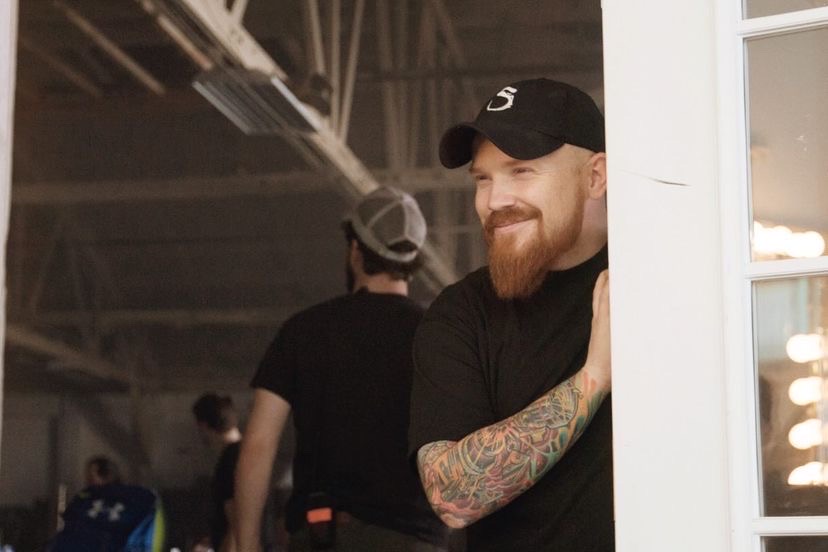
Kyle Cogan is a director, animator, and executive producer for the production company SIMIAN.LA.
br/>
SIMIAN.LA has produced music videos for artists such as John Legend, The Smashing Pumpkins, and Travis Scott. Their credits extend into post-production on animated videos for Machine Gun Kelly, Jessie J, and Eminem, to name a few.
They have also produced branded commercial content with top talents such as Charlie Puth (LG), Mike Tyson (GOD55), and The Weeknd (Pepsi/ NFL SuperBowl). Their most recent narrative film ‘Bad Assistant’ (starring Jason Schwartzman and directed by Kyle Cogan), is now available to stream on Argo.
Kyle started out working for NFL Films and got into editing and visual effects from there before starting to actively produce and direct videos. Simian has created a variety of creative and fun high-class music videos and has been growing continuously.
I had a super interesting conversation with Kyle where he laid out the origin story of Simian, details about some of their shoots during COVID, his process and inspiration, and his life overall. Through all the things he was so kind to share with me, I learned so much about how it is to run a production company and the music video industry overall.
Even with their busy schedules and tight turnarounds, he seems to stay a kind, humble and relaxed guy that does what he loves, and you can tell that Simian is his true pride and joy. I am so happy he agreed to do this interview for us, and I hope you enjoy his stories as much as I did:

Tell me how you got the idea to start your production company.
When we started, it was just me and my friends. We all want to work in these roles, you know, director or producer or whatever, but how are we going to get them? No, one's going to hire us right out of college. And then I thought, well, you're pretty good at that…and you're pretty good at that. What if we brought everyone together? At first, it’s kind of smoke and mirrors. Not letting everyone know how young you are. But one thing we had experienced was the hard work we all put in. We took all of our work and presented it as a brand, a company. We just; didn't fully say that we all just graduated college. We let the work speak for itself, and that’s where it all started.

What does Simian stand for?
Simian is Latin for greater ape. To me, Simian Design is synonymous with the evolution from ape to human land and the stories that come with it. Simian Design Group is the official company name, and when it started, we were mainly a design and animation company. We’ve coincidentally since evolved into a full-service production company. The S out logo is a profile of an ape.
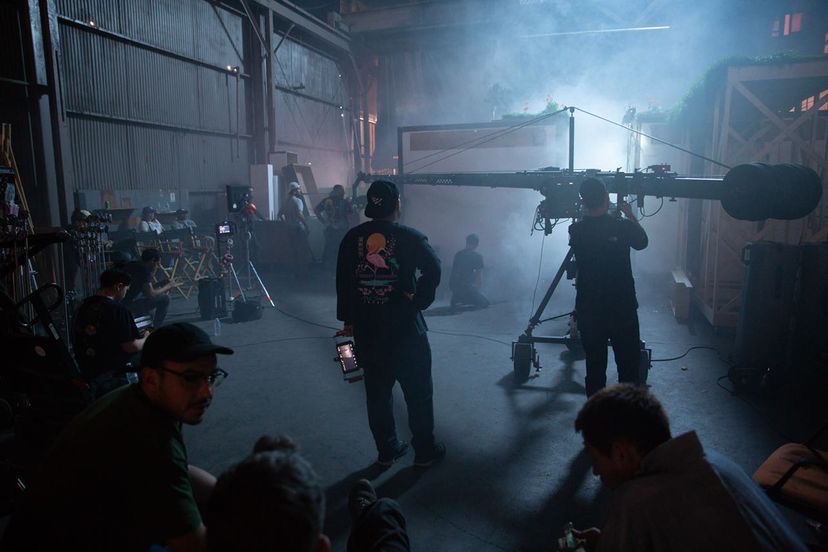
How did you guys get from starting as a group of friends to here?
It was my last semester of college. I recruited my friends to this idea I had, and we brought all of our work together. And created simian. I was still really nervous about after graduation. I felt like we had all worked so hard in school and outside of school for freelance projects. But had no idea how I was going to get a job or how that would translate to our careers.
In college, I did three internships. I did as many as possible with or without credit. It was all about the experience. I did an internship with Daily Planet. It's a post house in Chicago, and I was, there mainly to roto-scope Blackhawks players for the jumbotron videos and things like that. And I did it for two years, two days a week, eight hours a day, but I was too young as a first-year student to actually earn credit. I was just doing it to learn. I think it taught me what it actually takes to produce a VFX-based spot like that.
My second internship was at JBTV for a year and a half during college. I was honestly there more than school. It was such an amazing experience. It was this crazy place that this guy Jerry Bryant started. I believe he started as a DJ and then did commercial graphics, and he put everything, even financially, into his passion which was making a music television show for Chicago. Way before MTV. He was doing this music television show where he would play music videos and live performances of all types of artists, big and small. He had filmed some of the first live performances and interviews of bands like Dave Matthews Band, Flaming Lips, and Green Day. When I was there, it was during the twenty-fifth anniversary. And all self-funded like totally DIY, like this super crazy weird Willy Wonka-esque place, but I completely fell in love with it. He put a camera in your hands and let your run wild with passion. A part of me thinks I'm just trying to be Jerry. I'm just trying to do what he was doing, following his passion. As crazy as that was, as crazy as the JBTV scenario was…. It was one of the coolest experiences ever, especially as a young creative and music lover. I convinced my counselor at Columbia to give me a credit so I could get something out of it in the end. While I didn’t get paid, I loved every minute of it. Our work was on TV for the world to see , that links to Jerry. Marty Kane and I won an Emmy out of it for the show’s animated intro. We were only 19. We had to sneak in the back door of the bar for the Emmy party. Wild times.
My third internship was in the graphics department at NFL films in Philadelphia. It was everything to me. I was an NFL fanatic growing up, so this was a dream come true. My internship was during the off-season, and at the time, NFL films were still doing projects aside from the NFL for the outside sales department. There were things like dentists’ commercials and insurance commercials, which I was happy to help in any way I could, but I was like, I'm here at the NFL. What are we doing? Where’s the football? At the time, I was really bummed out about my first few months of the internship; you know, I moved all this way and then working on a dentist commercial; this was not what I was expecting.
A few months went by, and there was a new show called Top 100 for the NFL network. Finally, a project that had to do with football: I just wanted to see the production or be a part of post-production in whatever way I could. My boss Jim had me go with them because he could see how amped I was about the project, and he had me l take behind-the-scenes photos. The shoot was for an intro that was set in a bank vault with lockboxes. I took photos of the numbers on the boxes and textures of the scene. The next week my boss had given me what felt like a busy project, to make a title card or graphic with those photos I took. Busy project? Fuck whatever, let’s go. Let’s make this awesome. I wanted to impress him, and I was chomping at the bit to work on anything that had to do with football, something I could be passionate about. I took the photos and built out a title card for My favorite player Drew Bree’s in Cinema 4D and after-effects. A little 2d/3D mash-up. The next thing I know, my boss Jim had the producer of the show come down and check it out. They really loved it. The biggest problem for them was how do we develop this to have custom animation for each week. They weren’t sure how it would fit into their already busy schedule, and I offered to stay late and to all 100 title cards, whatever it would take to get my work in the show and on TV. We developed it a bit more, and that “busy work” project turned into one where I could show them what I could do. The show airs every summer, and they still use my animation for the show ten years later. They got their money’s worth, haha. Soon after, I was hired as a seasonal employee with them. I went home, walked for graduation, and came back to work at my dream job.
NFL Films is a huge reason for how Simian started. As a seasonal employee, it allowed me to work and gain professional experience during the football season. And because I was technically “terminated” at the end of every season, I never got comfortable with my position. My boss Jim always had my back and was so supportive. He was trying to get the company to hire me on as a full-time employee, and there was only so much he could do with headcount and such.

As an intern, I thought if I don't get hired at the NFL, I want to have something to move on with. That was the initial birth of simian. And I carried that mindset during every season during my five years with the NFL. So in the off-season, I didn’t take the off-season lightly, and I developed Simian. I needed something concrete and something I could pour all my passion into.
And the company developed each and every off-season.
In the off-season, I would try to do as many projects as I could. Music videos, lyric videos, title animations, VFX projects for friends’ short films. Anything to get the word out and let people know Simian existed. I had a few buddies that were in a band that played Warped tour
called the Frantic. And I would do their music videos for free, and that connection led to a small label that had small music video budgets. But hey, at that time, any budget was a good budget, and that was a win for me.
From there, I did music videos and lyric videos for a ton of different bands. Eventually, I did a lyric video for Jessie J and the film “ Kick Ass 2”. It was on one of those pitch websites for like $600 and needed to be done in a weekend or something ridiculous. Well, we got the pitch. We made it, and they loved it. And that was our first work with a major act.
Fast forward to 2014 or so. Do you remember the song Harlem shake? It became one of the biggest songs in the country, then the world. And so what that song did is it opened up how video streaming would affect how songs chart, which, to my knowledge, didn't happen that way at that time. So official, lyric, and visualizer videos would all count towards charting. So all of a sudden, these lyric music videos started to have a better budget, from hundreds to thousands of dollars. I saw it shift, and in a way, Simian was built on those lyric video budgets.
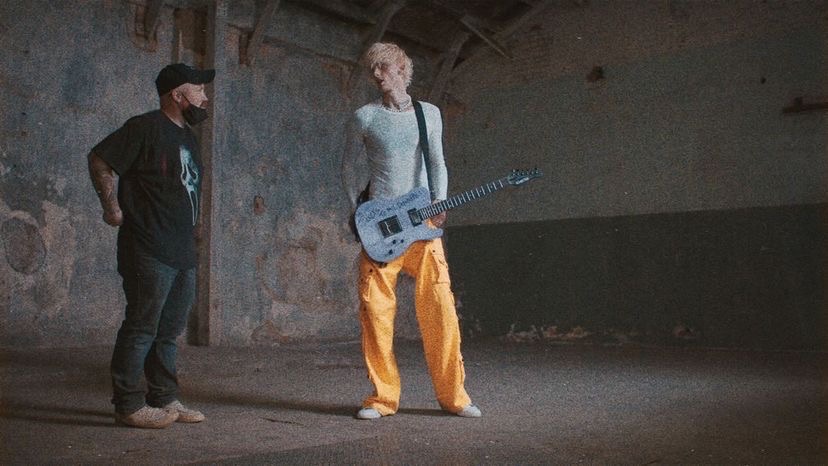
I saw you guys did at Machine Gun Kelly lyric video, correct?
Yep. Done a bunch for him. We’ve been doing him since he was first signed to a label. One of the latest ones we did, bloody valentine, during the Covid lockdown is by far my favorite. I don’t think I’ll ever top that one. It was just such a unique time. I had all this pent-up creative energy from quarantine, and it was a new punk rock direction for him. I had an amazing team and a ton of great elements to work with. The stars aligned on that one.
I don't do as many anymore. Very rare nowadays. I used to love to do the lyric videos, especially for all the bands I was into. I was having a good time with it. I didn’t care what the budget was. It was a great way to work during the off-season at the NFL and a foot in the door with the record labels.
It started as just two of us: myself and Marty Kane. We were just cranking these things out but always trying to blur the lines between lyrics and official videos. We incorporated live-action and 3D animation. They were almost always over the top and stupidly ambitious. Between the years 2014 to 2016, we did almost a hundred lyric videos in that two and a half years time period. Not enough sleep, too many sugar-free red bulls.
We became so busy that I had to choose between the NFL job and Simian. I began to ask myself, when will I make Simian my top priority and really give this a shot? I wasn’t going to wait around to have the NFL hire me full-time. I had a real creative itch, and whatever this creative itch thing was, I had to follow it and go. To my rep at the time, Morgan Lane’s credit, she got me two official videos before I ever moved out to LA. I told her I was quitting the NFL and doing this for real; she fought hard for me and landed two videos (virgin marys motherless land and breaking benjamin ashes of Eden) that gave me a hell of a start. That was a huge push to my confidence, and I thought: Alright, we can do this thing.
I think Simian today resembles more of what I wanted it to be initially. That being a team of producers with a roster of creatives: directors and animators. But it didn’t come easy.
At first l Marty and I developed a post house mentality. Our animation background helped that. Taking any jobs we could to get the word out. Eventually, after a few years in LA, we met the right people and landed a few more production jobs. But by no means we’re we a production company. We had a lot to learn. Then I met Brendan Garrett, who was a young talented LA producer. Same attitude as Marty and I. That “by any means necessary whatever it takes to get it done “kind of attitude. There was a little bit of reckless ambition in all of us in the early days of simian. I was getting more jobs as a director, and Brendan would pull out all the stops to make the production pop, and Marty would be there to finish off the crazy concepts in post. I was in both worlds. From the production side, j was directing and producing with Brendan, and from the post side, I would do 2D Vfx and animations, and Marty would do the 3D. After a few years, Apple scooped up Marty, and, deservingly so, he’s one of the best 3D people I know to this day. When Marty left, we shifted our focus to Production. Brendan brought a true sense of production to the company and was able to level us up from scrappy guerrilla filmmakers to professionals on set. Together we were able to boost the production side, and we were more than just a post company. Brendan is doing his thing production-wise now with Bucket Pictures, but we are still close; we still help each other figure out this crazy production world. I highly value my time working with both Marty and Brendan. Both were integral to the foundation of what Simian is today.
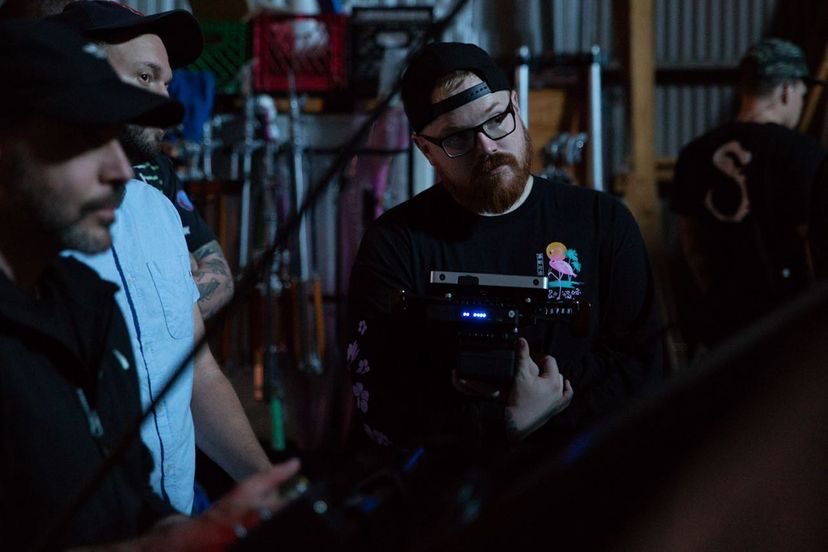
How did the time you spent at the NFL make you feel since you never got hired officially and ended up leaving for Simian?
It was tough. That was my dream job. On paper, it was great. The NFL is an amazing place to work, I made great friends, and my boss Jim Eyles was awesome. He got me. He believed in me. But unfortunately, the NFL projects weren’t fulfilling that creative itch. I knew I had to follow my passion. But I’d be lying if I didn’t say that I felt like I had a late start and felt a bit behind. So I tried and am still trying every day to make up for that lost time as a director and producer. Of course, age isn’t everything; it’s really about the journey. You can't compare your successes or failures to other people just because you're the same age. Everyone has their own level of maturity and their own goals. And it doesn't always line up. So don't let your weird headspace get you down if you’re not going down what some would consider the ‘normal path. ‘
I think what I, what I've learned just kind of recently in the past few years, is that your growth as a director isn’t going to be on the same trajectory as your peers. You can have your crew and your DP that you depend on. But everyone will grow at different times, different paces, and that’s ok. Directing is a marathon. You’ve got to prove yourself. Prove that people can trust you with their money. Some people gain that trust sooner, and most people gotta earn it, and it takes a long time, especially in music videos and commercials. Survive by any means necessary. Whatever you gotta do to still be around and stay creating. The ones who can find a way to keep creating are the ones who make it.
So for the Faouzia and John Legend video "Minefields,” Was that your idea based on the budget or based on the song? Did you guys wanted to do it that way, or did they tell you how to do it?
Yeah. That one was a totally open brief. So that video. Hah. Oh man… haha. Originally they were both playing piano on the lake. Essentially they were going to be on opposite sides of the reflection. And then, we’d end with practical water cannons. But then, on the day, due to unforeseen circumstances, we had only Faouzia. And Johns’s portion would be shot at a later time.
So we had to make due with what we had. The water cannon finale was scrapped. And we focused on Faouzia. I would rather get more shots of her on the lake during sunset than trying to force the water canons. I think, in hindsight, it probably worked out for the best.
The original concept was thrown out, and I had no idea what it was going to be. But I followed my instincts. And so what I pitched quickly to the video commissioner Andrew Reid was that it starts with both in different locations, and they'll come together then in a new location with a different type of explosion. If we’re going to have another shoot day, let’s get more production value out of this rather than returning to the same scene.
Due to the circumstances, the treatment and the video are so different. When we had to pivot, it didn’t make sense to come back to the same spot. How do I get more production value and go somewhere else? Get a new look. Get the most out of whatever that second day was. How do I make the most out of it and get the story to work, too.
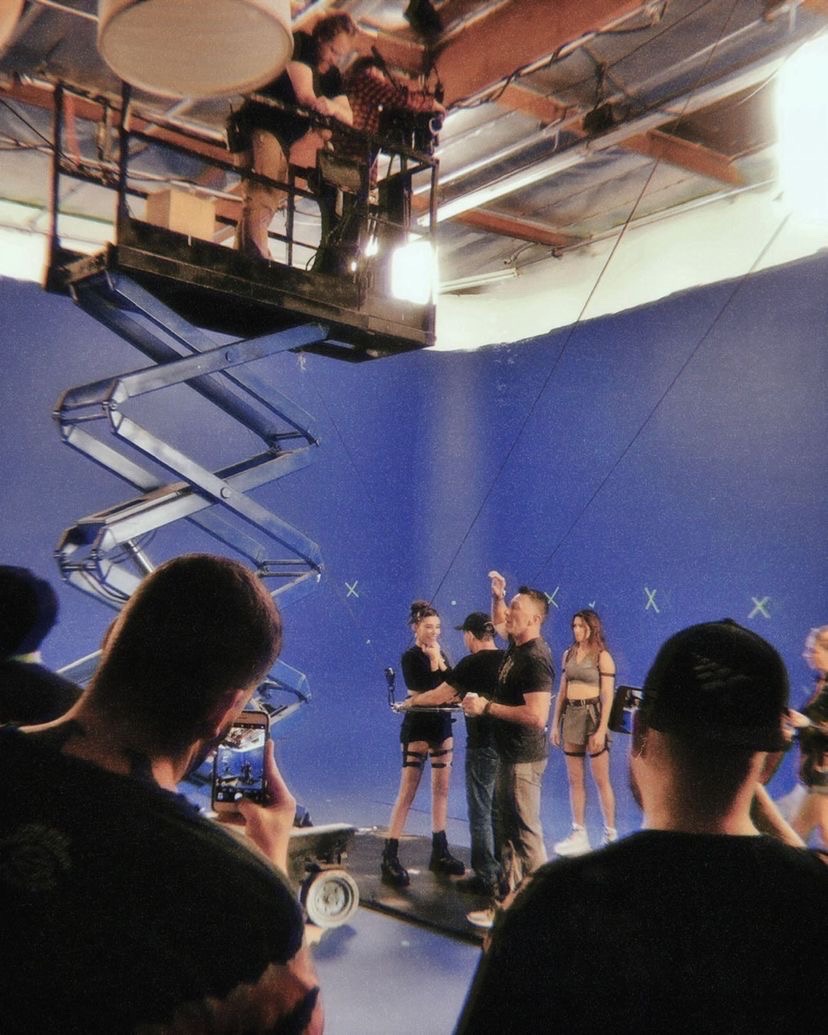
Yeah, but it works. It's beautiful. I like the video a lot.
Well, thanks, and that's the thing. If you do your job, the audience won’t know what went wrong. Being a music video director, you ask yourself that if everything goes wrong, do you still have a video here? Can you shape an unwanted scenario into a successful video? Music videos are tough. There’s always never enough money, time, and crazy requests by the labels. The job as director is finding a way through all the bs and nonsense to still get creative and make the artist happy.

Ok, so. With that same song, you also went and did their live performance on the Today Show and The Kelly Clarkson Show, right?
Yup. Those were, those were cool. Proud of how those came out with a super-fast turnaround. And those are tricky as well too. Cause we're still in COVID lockdown. Faouzia was in Canada, and John was in LA. So the goal was to find a way to bring live performances together. We shot the Today Show and the Kelly Show performance on the same day to get the most out of the budget. I heard about it on Wednesday. It was booked on Friday night. We shot Faouzia Monday morning virtually through zoom in Canada and Tuesday morning in LA with John.
I needed to find a way to bring Faouzia to LA. And we did that through projection for the Today show and hologram for the Kelly show. For the Kelly show, Faouzias’ live performance was projected onto a nebula net, creating a hologram for John to perform with. For the Today Show, we created an animated background from night Timelapse starscapes to sunrises timed out to the instrumentals. A concept that was present in the official video. We sent that background to the production in Canada. They projected the animated background behind her live performance, and then we took that live performance and incorporated it in our set in LA.
For two-thirds of the performance, Faouzia is in Canada, and John is in LA. There was a window projecting the stars,capes, and sunset begin John, and at the bridge, Faouzias projection walked out onto our set seamlessly, bringing them together for their duet once again. The animated background gave the performance a connective tissue between the two. And then that crescendo moment, in the music, they really come together. I don't think I was ever trying to fool people that she was there, but it did the job for the show.
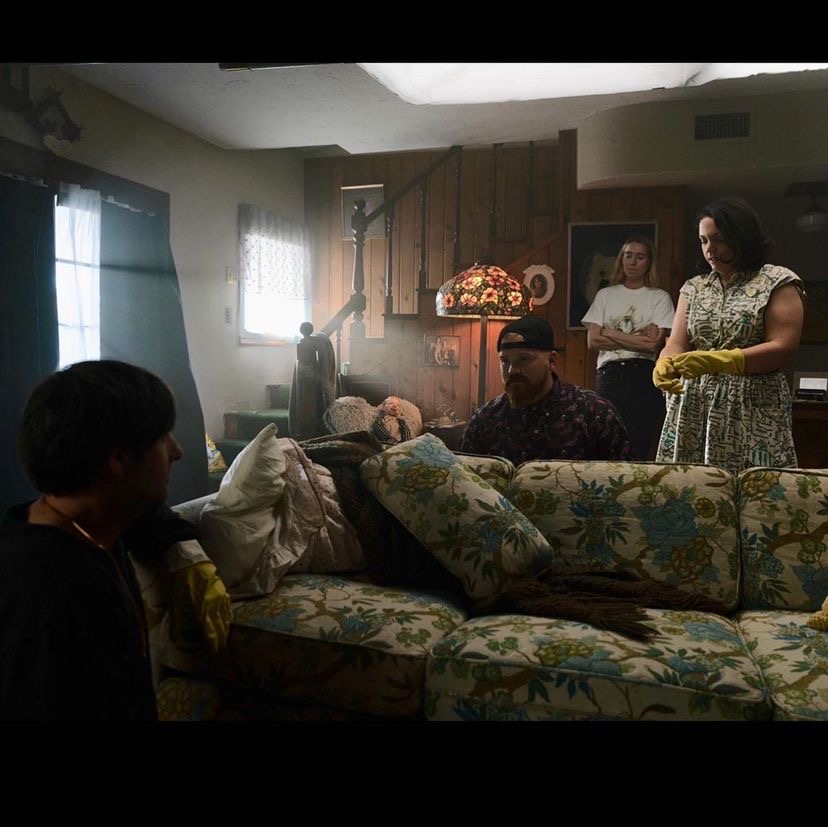
What are some of the things you have realized and learned since running a production company like Simian?
I think if you can realize that with directors, producers, and other creatives, this thing is very team-oriented, and it's not always about ego, and it's not always about getting your way. It's a give and take and listening to those you trust, encouraging the people to make the best possible product with the circumstance. And I think different people have ways of pushing people, and there are some directors that I used to look up to so much, and they do such amazing work. And then you learn they just direct by fear. They're just angry, and everyone's afraid to tell them anything. I don't ever want to be that guy. I won’t ever be that guy. If ever, do I need to quit. I do think there's a way to do these stressful videos and still treat people right and have respect for your crew. And if that takes a little longer to get the bigger videos and your bigger projects, then so be it. I’ll wait.
As a production company, it's not as sexy of an answer, but to me, it's about implementing systems and structure into what we do. So it's less chaotic because production is always chaos. Its controlling the chaos and having the experience and the know-how of how to handle the wild scenarios music videos or any production may present.
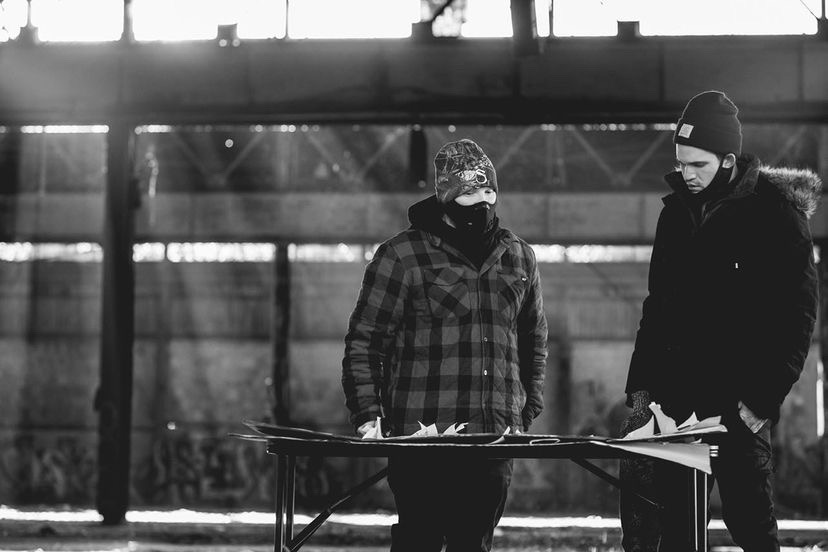
This business, like any business, is investing in people. We have two incredible producers by my side in, Logan Powaski and Leah Butcher, that do an amazing job. Super producers and even better people. Honestly, I’ve had amazing people believe in Simian along the way—people like Zack Stauffer and our incredible reps Jen Herrera and Andy Roberts at Las Bandas. Without an amazing team of people and a reliable patient crew, none of this is possible as a director or producer. It’s a people business.
We’re officially announcing our director roster the top of 2022, along with a little rebrand of the website and such. I am excited about the diverse group of veterans and young talent we have aboard. We have some commercials we are finishing up that I am excited about as well as some films in pre-production. And always lots and lots of music videos. Gotta keep moving, gotta keep creating. By any means necessary, hah. This business is a tough business, but I love it. And honestly, I can't see myself doing anything else.
In the time between writing this article and it being published, Kyle has worked on another MGK lyric video; this time, he filled walls with the entire album’s lyrics. Besides that, he made many other music videos. The latest that came out was for Gryffin and Ryan Tedder’s new song “You are loved.” You could say Kyle stays very busy! And we are very happy for him.
|
|

